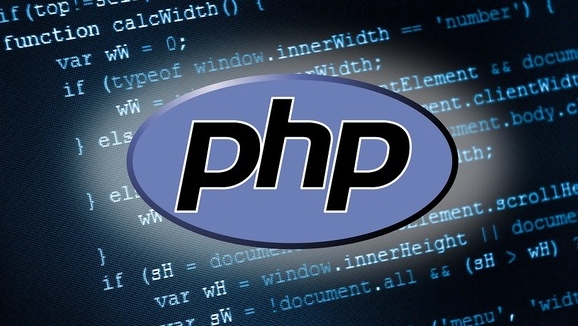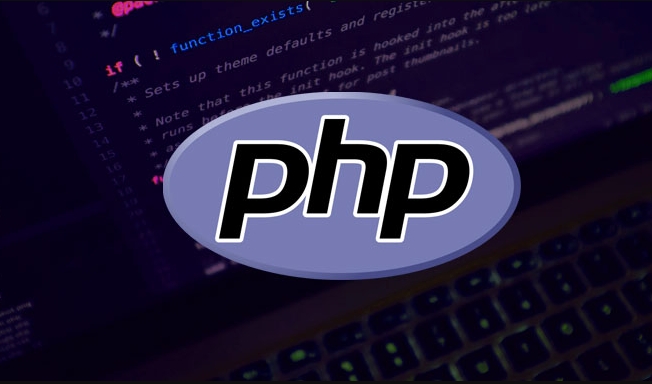 Backend Development
Backend Development
 PHP Tutorial
PHP Tutorial
 how to get the next value in a php array without advancing the pointer
how to get the next value in a php array without advancing the pointer
how to get the next value in a php array without advancing the pointer
Jul 04, 2025 am 02:48 AMGet the next value of the array in PHP without moving the internal pointer, which can be achieved by the following methods: 1. Use next() and prev() to temporarily move the pointer and restore it; 2. Use array_keys() to manually find the next element; 3. Encapsulate it as a helper function to improve reusability. These three methods are suitable for different scenarios, such as simple operation, avoiding pointer changes or requiring neat codes.

In PHP, if you want to get the next value in an array without moving the internal pointer forward, there's no direct built-in function that does exactly that. But with a few tricks, you can achieve it pretty easily.

1. Use current() and next() but reset the pointer
One common way is to use next() to peek at the next value, then immediately use prev() or reset() to move the pointer back. This approach works well for simple use cases:

$array = [10, 20, 30]; current($array); // Make sure pointer is at the beginning $nextValue = next($array); prev($array); // Or reset($array) if you want to go back to the start echo $nextValue; // Outputs: 20
This method temporarily advances the pointer just enough to read the next value, then restores it. It's straightforward but be cautious when using this in loops or complex logic where pointer position matters.
2. Use array_slice() to get the next element
If you don't want to touch the pointer at all, you can work directly with keys. Here's how to do it by getting the current key and accessing the next index manually:

$array = [10, 20, 30];
$keys = array_keys($array);
$currentIndex = key($array); // Or manually set if needed
if (($nextKey = array_search($currentIndex, $keys)) !== false && isset($keys[$nextKey 1])) {
$nextValue = $array[$keys[$nextKey 1]];
echo $nextValue; // Outputs: 20
}This avoids changing the pointer entirely and gives you more control over array traversal. Just keep in mind that it requires extra steps like extracting keys and searching through them.
3. Use a custom helper function
For cleaner code, especially if you're doing this often, wrap it in a reusable function:
function peek_next($array, $currentKey) {
$keys = array_keys($array);
$index = array_search($currentKey, $keys);
if ($index !== false && isset($keys[$index 1])) {
return $array[$keys[$index 1]];
}
return null;
}
// Usage
$array = [10, 20, 30];
$currentKey = key($array); // eg, '0'
echo peek_next($array, $currentKey); // Outputs: 20This method is safe and keeps your main logic clean. You pass in the array and the current key, and it returns the next value (or null if none exists).
- If you're OK with briefly moving the pointer,
next()prev()is quick and readable. - If you need to avoid touching the pointer altogether, working with keys via
array_keys()is safe. - For better reusability and clarity, a helper function makes sense.
Basically that's it.
The above is the detailed content of how to get the next value in a php array without advancing the pointer. For more information, please follow other related articles on the PHP Chinese website!

Hot AI Tools

Undress AI Tool
Undress images for free

Undresser.AI Undress
AI-powered app for creating realistic nude photos

AI Clothes Remover
Online AI tool for removing clothes from photos.

Clothoff.io
AI clothes remover

Video Face Swap
Swap faces in any video effortlessly with our completely free AI face swap tool!

Hot Article

Hot Tools

Notepad++7.3.1
Easy-to-use and free code editor

SublimeText3 Chinese version
Chinese version, very easy to use

Zend Studio 13.0.1
Powerful PHP integrated development environment

Dreamweaver CS6
Visual web development tools

SublimeText3 Mac version
God-level code editing software (SublimeText3)
 PHP Variable Scope Explained
Jul 17, 2025 am 04:16 AM
PHP Variable Scope Explained
Jul 17, 2025 am 04:16 AM
Common problems and solutions for PHP variable scope include: 1. The global variable cannot be accessed within the function, and it needs to be passed in using the global keyword or parameter; 2. The static variable is declared with static, and it is only initialized once and the value is maintained between multiple calls; 3. Hyperglobal variables such as $_GET and $_POST can be used directly in any scope, but you need to pay attention to safe filtering; 4. Anonymous functions need to introduce parent scope variables through the use keyword, and when modifying external variables, you need to pass a reference. Mastering these rules can help avoid errors and improve code stability.
 How to handle File Uploads securely in PHP?
Jul 08, 2025 am 02:37 AM
How to handle File Uploads securely in PHP?
Jul 08, 2025 am 02:37 AM
To safely handle PHP file uploads, you need to verify the source and type, control the file name and path, set server restrictions, and process media files twice. 1. Verify the upload source to prevent CSRF through token and detect the real MIME type through finfo_file using whitelist control; 2. Rename the file to a random string and determine the extension to store it in a non-Web directory according to the detection type; 3. PHP configuration limits the upload size and temporary directory Nginx/Apache prohibits access to the upload directory; 4. The GD library resaves the pictures to clear potential malicious data.
 Commenting Out Code in PHP
Jul 18, 2025 am 04:57 AM
Commenting Out Code in PHP
Jul 18, 2025 am 04:57 AM
There are three common methods for PHP comment code: 1. Use // or # to block one line of code, and it is recommended to use //; 2. Use /.../ to wrap code blocks with multiple lines, which cannot be nested but can be crossed; 3. Combination skills comments such as using /if(){}/ to control logic blocks, or to improve efficiency with editor shortcut keys, you should pay attention to closing symbols and avoid nesting when using them.
 How Do Generators Work in PHP?
Jul 11, 2025 am 03:12 AM
How Do Generators Work in PHP?
Jul 11, 2025 am 03:12 AM
AgeneratorinPHPisamemory-efficientwaytoiterateoverlargedatasetsbyyieldingvaluesoneatatimeinsteadofreturningthemallatonce.1.Generatorsusetheyieldkeywordtoproducevaluesondemand,reducingmemoryusage.2.Theyareusefulforhandlingbigloops,readinglargefiles,or
 Tips for Writing PHP Comments
Jul 18, 2025 am 04:51 AM
Tips for Writing PHP Comments
Jul 18, 2025 am 04:51 AM
The key to writing PHP comments is to clarify the purpose and specifications. Comments should explain "why" rather than "what was done", avoiding redundancy or too simplicity. 1. Use a unified format, such as docblock (/*/) for class and method descriptions to improve readability and tool compatibility; 2. Emphasize the reasons behind the logic, such as why JS jumps need to be output manually; 3. Add an overview description before complex code, describe the process in steps, and help understand the overall idea; 4. Use TODO and FIXME rationally to mark to-do items and problems to facilitate subsequent tracking and collaboration. Good annotations can reduce communication costs and improve code maintenance efficiency.
 Quick PHP Installation Tutorial
Jul 18, 2025 am 04:52 AM
Quick PHP Installation Tutorial
Jul 18, 2025 am 04:52 AM
ToinstallPHPquickly,useXAMPPonWindowsorHomebrewonmacOS.1.OnWindows,downloadandinstallXAMPP,selectcomponents,startApache,andplacefilesinhtdocs.2.Alternatively,manuallyinstallPHPfromphp.netandsetupaserverlikeApache.3.OnmacOS,installHomebrew,thenrun'bre
 How to access a character in a string by index in PHP
Jul 12, 2025 am 03:15 AM
How to access a character in a string by index in PHP
Jul 12, 2025 am 03:15 AM
In PHP, you can use square brackets or curly braces to obtain string specific index characters, but square brackets are recommended; the index starts from 0, and the access outside the range returns a null value and cannot be assigned a value; mb_substr is required to handle multi-byte characters. For example: $str="hello";echo$str[0]; output h; and Chinese characters such as mb_substr($str,1,1) need to obtain the correct result; in actual applications, the length of the string should be checked before looping, dynamic strings need to be verified for validity, and multilingual projects recommend using multi-byte security functions uniformly.
 Learning PHP: A Beginner's Guide
Jul 18, 2025 am 04:54 AM
Learning PHP: A Beginner's Guide
Jul 18, 2025 am 04:54 AM
TolearnPHPeffectively,startbysettingupalocalserverenvironmentusingtoolslikeXAMPPandacodeeditorlikeVSCode.1)InstallXAMPPforApache,MySQL,andPHP.2)Useacodeeditorforsyntaxsupport.3)TestyoursetupwithasimplePHPfile.Next,learnPHPbasicsincludingvariables,ech





